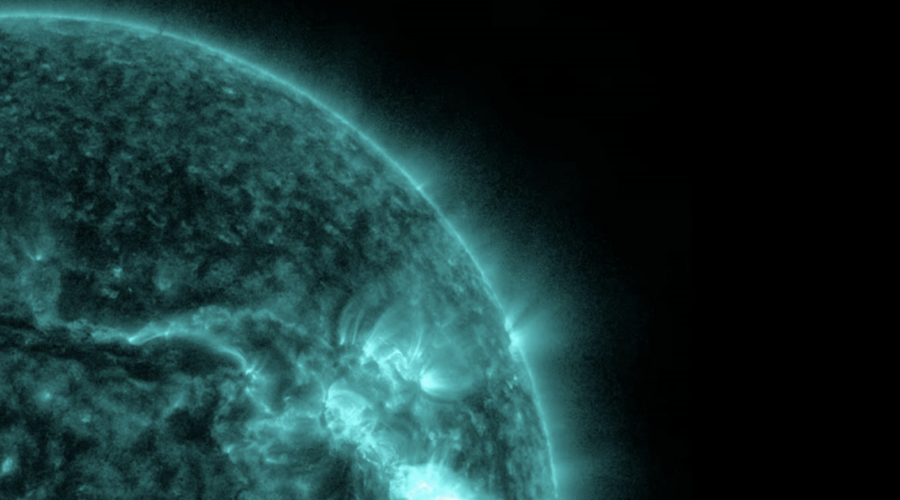Solar Flare Hits Earth, One Of Largest Ever Recorded
A massive solar flare struck the Earth, disrupting radio signals and shocking scientists. The flare, which reached our little blue marble on December 14, has been called the largest on record and is currently classified as an X2.8 flare. The X-class denotation means that this particular solar flare was among the most intense ever discovered, while the numbers offer information about the strength of the particle eruption.
Solar flares are classified as powerful bursts of energy that erupt from the electromagnetic radiation in the Sun’s atmosphere. Flares of this kind can often have an adverse impact on Earth’s electrical grids, navigation signals, radio communications, and more. The frequency and strength of these events can vary with the solar cycle, which is completed every eleven years, meaning scientists can often roughly predict about a decade of solar activity.
For those fascinated by the study and impact that flares have, NASA released this image of the radiation taken via a high-powered telescope…

The image shows the licking flames of the Sun’s surface whipping and blasting outward as the solar activity increases.
Currently, the solar cycle is stronger than researchers originally predicted, resulting in massive solar flares such as the X2.8 striking Earth. The National Oceanic Atmospheric Administration, or NOAA, is currently predicting a peak of solar activity in October of 2024. This serves as an early warning to print out MapQuest directions if you plan to do any traveling for Halloween next year.
The radio signals most affected by the recent solar flare were predominantly located in Central and South America, where the particles made an impact. The resulting outage caused a brief but noticeable blackout, causing scientists and telecommunications companies to scramble to return online. Blackouts of this kind are generally quite brief and stem from radiation emanating from the Sun when the surface of the magma ball is extremely active.
This activity is often called a solar maximum, meaning the maximum amount of activity happening on the star’s fiery surface. During times of intense solar maximums, these energy particles can travel to Earth and even harm human DNA, albeit at a very low scale. Solar flares carry with them an intense amount of UV radiation rays, which human beings can best protect themselves from by utilizing sunscreen when going outdoors for prolonged periods of time.
Still, massive solar flares such as the X2.8 occur very infrequently, averaging only eight times per 11-year solar cycle. Smaller flares, such as the minor M classification, can occur over 2,000 times per solar cycle and often make such little impact on Earth that they go unreported by news agencies. Furthermore, the electrical grid, which provides satellite, navigation, and internet access for most of the planet, has been robustly fortified, making it extremely difficult to knock out and even harder to stay out for long periods of time.
This means that, even in the event of abnormally powerful solar flares, most telecommunications should be back online after a brief outage.
Source: NOAA












